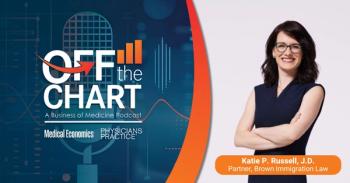
Pros and Cons of the Patient-Centered Medical Home Model
Patient-Centered Medical Homes are good for healthcare, but medical practices should also be realistic about the model, if it is truly a good fit, and its results.
I contend there is no primary-care practice that can claim to be a Patient-Centered Medical Home (PCMH), despite certificates and credentials cited to the contrary. Transforming toward a medical home? Yes. Evolving toward a medical home? You bet. But a certified PCMH where the work is done and the practice is happily on autopilot in the new patient-centered world? Not even close.
Am I anti-PCMH? On the contrary, I happen to be one of the nation's biggest fans of the Patient-Centered Medical Home model. PCMH is not a place, although the heart of the medical home is the primary-care physician's office. Nor am I anti-certified/designated PCMH. Again, on the contrary, I'm an advocate. Practices need to be realistic when seeking certification, however. Submitting practice information online and receiving feedback online may be sufficient for physician leaders who want to dip their toe in the PCMH water. Others may need the hands-on TLC and training that comes with certification programs that require in-person audits conducted by nurses or other trained professionals with a healthcare background, who understand the comprehensive nature of a PCMH.
Regardless of certification decisions, I have found that physicians who have seriously committed to the PCMH journey are willing to invest money, research time, and training dollars to the following two areas:
1. A patient registry that clearly identifies and tracks the population of a specific practice and allows for reports that can identify needed tests and gaps in care, monitor practice quality scores, and gauge cost of care.
2. A population coach or care manager who understands the community where the practice is located, knows the population and needs of a particular practice, and can oversee care-management activities for the practice's patients.
Looking at populations, for example, I have found that few practices grasp the particular needs of the frail and elderly (including the terminally ill), those with multiple chronic conditions and comorbidities, and even the relatively healthy super-seniors advancing to age 90 and beyond. Practices with a large elderly population who are serious about providing patient-centered care to this population will have a practitioner on the healthcare team with a concentrated education and experience in gerontology.
Wow - barely halfway into this post and I've already mentioned essential tech tools and team member talent or specialized skills that, when combined, can cost a PCMH-bound practice upwards of $100,000. But wait there's more. How about formal education and training of staff; including training of administrative staff such as receptionists and office managers who likely never received any type of regular training? That's going to cost you. (But it's going to pay off, too. More on that later.)
Negatives aren't all cost related. I've seen the PCMH journey seriously derailed when a champion of the movement, often a registered nurse or care manager, leaves the practice for a new career opportunity. Without a backup to immediately step in to serve as a new champion, significant gains in practice transformation can be lost in a matter of months. Don't let that happen! Ensure a deep bench of talent with all team members on board and a strong physician leader to serve as head coach.
Okay, I saved the best for last: the positives of transforming to a PCMH. Here are just a few benefits:
• Improved communication with patients and a better understanding of their needs, resulting in better patient outcomes and increased patient satisfaction.
• A better trained, more-engaged practice team that creates efficiencies through team-based care within the practice and the broader medical home.
• Shared responsibilities among team members - which can include specialists such as nutritionists, behavioral health specialists, and exercise specialists who may have more targeted and current knowledge of certain areas of healthcare than the physician.
• Certain diagnostic tests are performed in the physician's office rather than the ER, cutting down on the cost of expensive or unnecessary hospital/ER-based testing.
• Research in Michigan and elsewhere reflects that PCMH-practice patients are turning to their primary-care physician for care, rather than the ER.
Amid bickering over healthcare reform, patient-centered care is moving forward and will continue to do so. As it currently stands, private-practice physicians ultimately have three options if consciously deciding not to pursue the PCMH model in their practice:
1. Affiliate with a large physician practice that is committed to transformation and PCMH;
2. Affiliate with an academic institution that can serve as an alternative to a physician organization; or
3. Be purchased by a hospital; with the caveat that the hospital may then require your practice to transform into a PCMH (as hospitals buy into the PCMH-neighborhood concept).
Medicine is moving from episodic to global care. The days of billing and coding are nearing an end, destined to be replaced by a value-based (rather than a volume-based) payment approach. Private-practice physicians who refuse to make a decision on moving toward the PCMH model may ultimately find themselves with no decision to make.
Ewa Matuszewski is CEO of MedNetOne Health Solutions, a Rochester, Mich.-based healthcare management organization for primary- and specialty-care physicians and behavioral health specialists. E-mail her
Newsletter
Optimize your practice with the Physicians Practice newsletter, offering management pearls, leadership tips, and business strategies tailored for practice administrators and physicians of any specialty.








